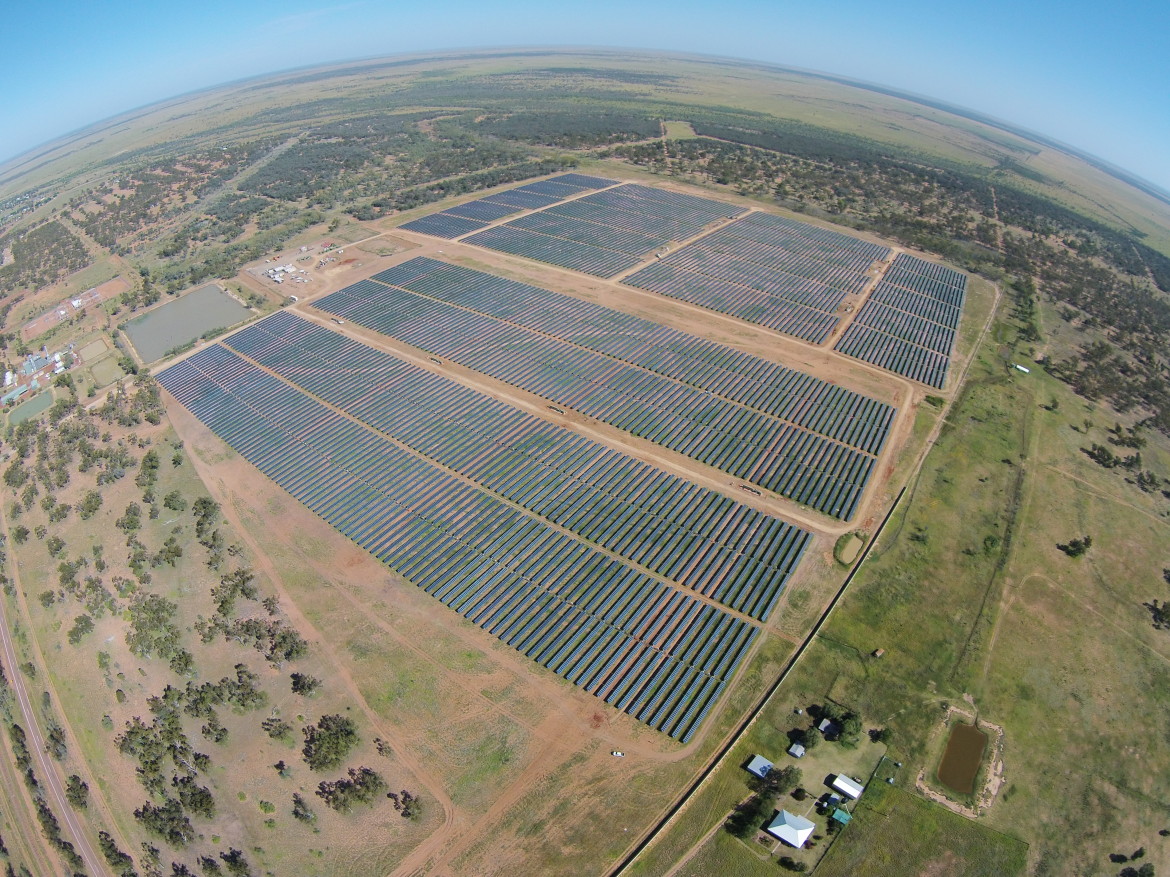The Australian Renewable Energy Agency (ARENA) is also offering AU$9.5 million ($7 million) to back development of the AU$100 million project. Upon completion, the installation will generate enough electricity to cater to the needs of 15,000 households. The construction phase will create roughly 70 jobs, according to a statement on the CEFC’s website.
“We have been working on redevelopment options for the site for a really long time and it is great to finally see one of these options come to life,” said Anthony Yeates, executive general manager of business development for RATCH-Australia. “Finance from the CEFC and ARENA's funding have helped us repurpose a disused site which receives optimal sunshine, and can take advantage of existing infrastructure.”
Sydney-based electricity distributor Alinta Energy has agreed to buy up to 70% of the electricity generated at the Colinsville site. Gloria Chan, the CEFC’s large-scale solar lead, said the transformation of the coal-fired plant — which was shut down in December 2012 — could serve as a model for the repurposing of other old power stations in the future.
RATCH-Australia has not revealed the PV module supplier for the Colinsville projects, which will feature about 180,000 ground-mounted solar panels and a single-axis tracking system.
The CEFC has invested more than AU$370 million ($273 million) in roughly 400 MW of solar capacity at 10 sites. It has provided AU$900 million worth of debt financing for PV installations since it was established in September 2015. It says that it is particularly interested in backing projects that support grid stability, as well as hybrid projects that combine PV with other technologies.
“We are now at the tipping point of seeing Australian utility-scale solar projects becoming commercially viable without grant funding. Our finance has played a significant role in this transformation, given that in 2012 there was only 18 MW of installed capacity,” said Chan, citing statistics from Bloomberg New Energy Finance (BNEF) that show roughly 1 GW had been installed in the country by the end of December.
Chen said that a growing number of institutional investors are starting to look at solar investments in Australia. “Our debt finance has helped developers secure the backing they need and has helped investors find the right level of comfort to invest,” she added.
In January, the CEFC offered AU$5 million to help grid-integration specialist GreenSync expand its business. And in March, the state-owned green lender provided AU$77 million of financing to Sydney-based developer Edify Energy for 165 MW of solar at three locations in Queensland and Victoria.
The 42.5 MW Colinsville array is one of several large-scale solar projects announced in Australia in recent weeks. In late March, U.S.-based First Solar reached financial close on a 48.5 MW array that will be built in Manildra, New South Wales. In April, Solar Q unveiled plans to build 350 MW in in Queensland’s Lower Wonga region, while Canadian Solar obtained AU$65 million of non-recourse financing in early May for 47 MW of capacity in Barcaldine, Queensland.
This content is protected by copyright and may not be reused. If you want to cooperate with us and would like to reuse some of our content, please contact: editors@pv-magazine.com.



By submitting this form you agree to pv magazine using your data for the purposes of publishing your comment.
Your personal data will only be disclosed or otherwise transmitted to third parties for the purposes of spam filtering or if this is necessary for technical maintenance of the website. Any other transfer to third parties will not take place unless this is justified on the basis of applicable data protection regulations or if pv magazine is legally obliged to do so.
You may revoke this consent at any time with effect for the future, in which case your personal data will be deleted immediately. Otherwise, your data will be deleted if pv magazine has processed your request or the purpose of data storage is fulfilled.
Further information on data privacy can be found in our Data Protection Policy.